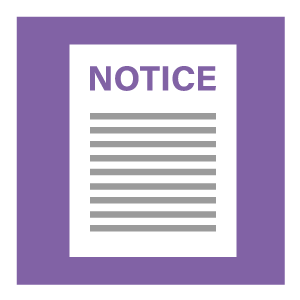Employers must send Medicare Part D notices to all Medicare-eligible individuals before October 15, 2020, regardless of the employer's size or when the plan year starts.
 This notice tells an individual whether the group health plan’s prescription drug coverage is creditable or non-creditable. “Creditable” means that the plan’s prescription drug coverage pays at least as much as the standard Part D coverage plan. This notice is important because the only way someone can avoid paying a lifelong late enrollment penalty for delaying Part D coverage is to have creditable coverage.
This notice tells an individual whether the group health plan’s prescription drug coverage is creditable or non-creditable. “Creditable” means that the plan’s prescription drug coverage pays at least as much as the standard Part D coverage plan. This notice is important because the only way someone can avoid paying a lifelong late enrollment penalty for delaying Part D coverage is to have creditable coverage.
There are a few ways to determine if coverage is creditable or not. The employer should first check with the carrier or TPA to see if a determination has been made for each specific plan an employer offers. In other words, if an employer offers an HDHP and a copay plan, they’ll need to know if each plan is creditable or non-creditable.
If the TPA or carrier will not make that determination, then the employer must either use CMS’s design-based simplification method (see link below) or obtain an actuarial determination. Unfortunately, the design-based method is quite difficult for an employer to actually use, so if the carrier or TPA doesn’t provide a determination, then CMS says an actuarial determination must be made.
The employer must give a notice to Medicare-eligible individuals who are enrolled or seeking to enroll. Identifying these individuals can be difficult, particularly when eligibility for Medicare is based on a factor other than age, such as disability or end-stage renal disease. As a result, it may be easier to give Medicare Part D disclosures to everyone who is enrolled, or seeking to enroll, in the group plan. This way the notice is provided to everyone, and the employer doesn’t need to find out which individuals are eligible for Part D.
Lastly, the notice may be sent by mail or electronically if the DOL’s electronic disclosure requirements are met. This means that participants must be able to access electronic documents at their regular place of work on a daily basis as part of their normal duties. Otherwise, an employee can provide an email address and agree to receive it electronically as long as they’re informed of their right to get a paper copy, how to withdraw consent, how to update information and which software/hardware is required. A paper copy of the notice could also be sent if it is administratively burdensome to obtain consent to receive documents electronically.
- Model Notices: https://www.cms.gov/Medicare/Prescription-Drug-Coverage/CreditableCoverage/Model-Notice-Letters.html
- Creditable Coverage Simplified Determination: https://www.cms.gov/Medicare/Prescription-Drug-Coverage/CreditableCoverage/Downloads/CCSimplified091809.pdf
COMMENTS